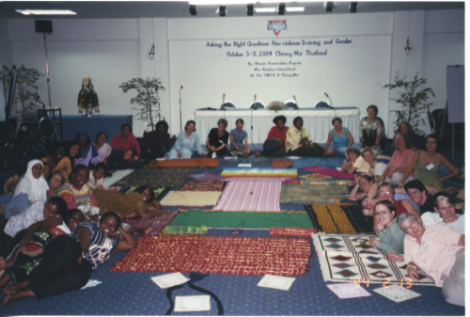Gender and Nonviolent Action
Wars will cease when men refuse to fight – and women refuse to approve. Jesse Wallace Hugan, founder of War Resisters League
Introduction
It may seem simple and obvious that we want both men and women involved in our struggles against war and injustice. However, if we want to fully utilise people's talents, energy, and insights, we need to apply gender awareness to how we organise ourselves, how we design our campaigns, and how we conduct our trainings for action.
Why? Because gender, our societies' definitions of male and female roles, of masculinity and femininity, influences all of us. And the social traditions that have constructed masculinity as dominant, aggressive, and controlling and femininity as weak, submissive, and serving have deeply affected each of us. Gender awareness helps us to make sure that in our nonviolent actions and campaigns, we don't perpetuate the same injustices we are trying to stop.
In antimilitarist campaigns, gender awareness and gender-based analysis are also valuable tools for creating an effective strategy. Gender is an element in every conflict. It may not be the cause of a conflict, but different ideas of masculinity and femininity are at the heart of why and how people fight. Military systems are built to function on certain ideas and assumptions about male and female roles. If we want to create nonviolent structures and systems for resolving conflict, we will need to create new assumptions and expectations about gender.
In this section, we include concepts and exercises to help you to incorporate gender awareness in your trainings and to examine your campaigns and nonviolent actions through a gender lens.

Comments
There are no comments on this article. Have you got something related to this topic, you'd like to say? Please feel free to be the first person to make a comment.
Add new comment